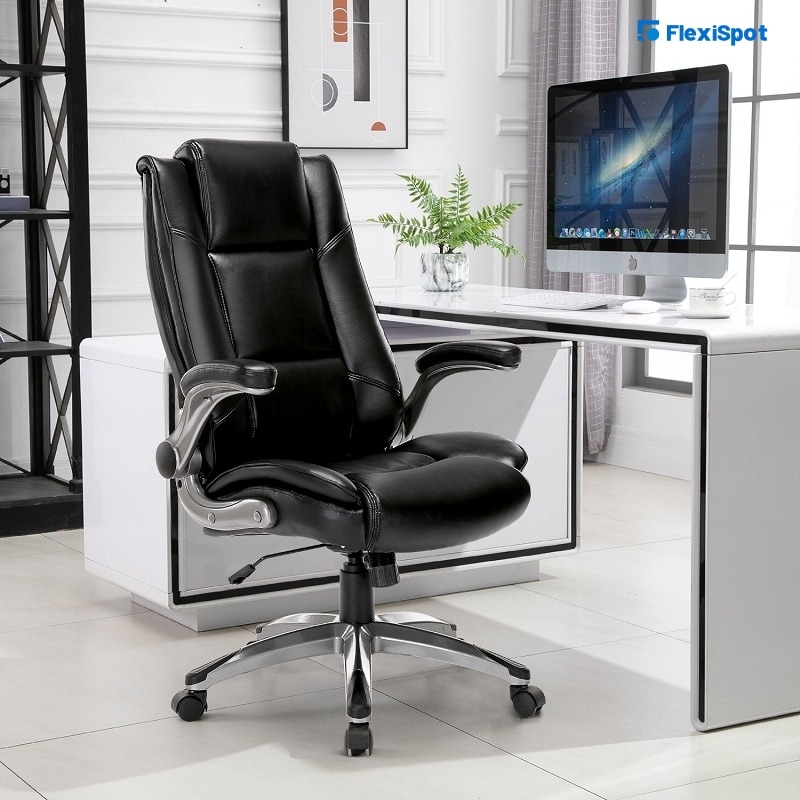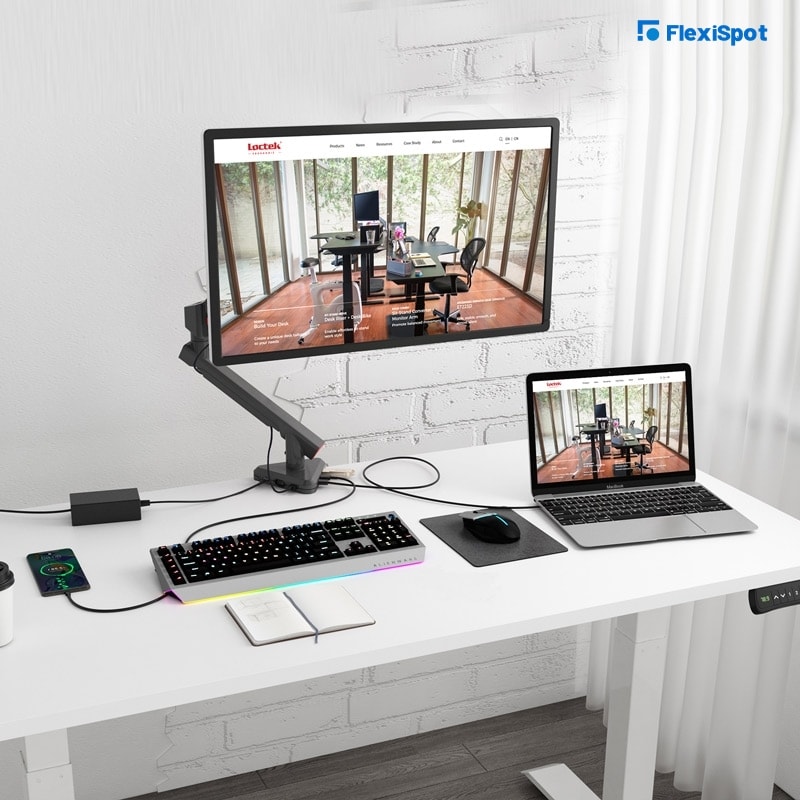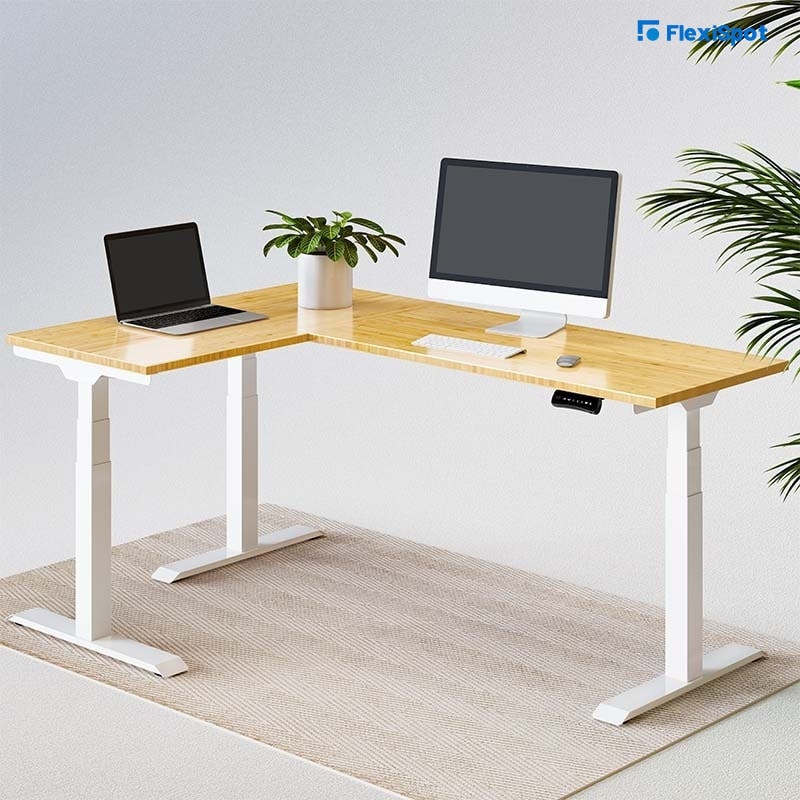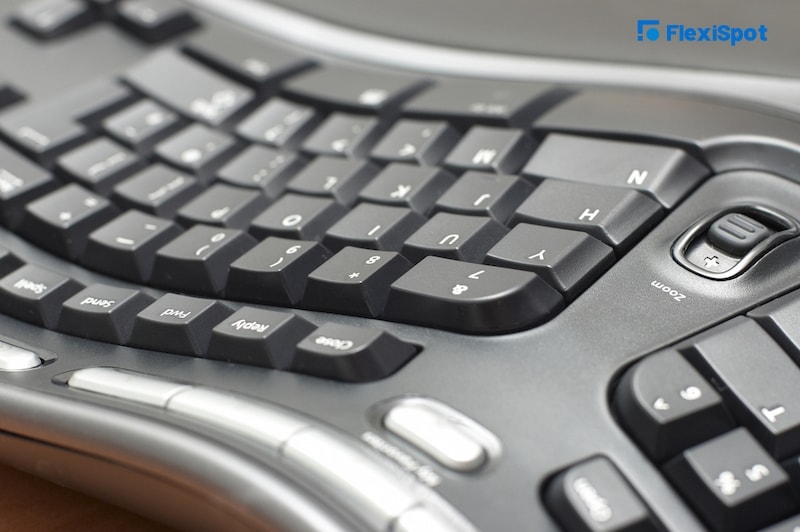Most work desks at offices aren’t ergonomic. Most employers save themselves the trouble of investing in custom ergonomic solutions to ensure all employees are comfortable at work and instead install identical work desks all over.
Now, how can you expect employees of different heights and physiques to work comfortably on work desks that are all of the same height and have the same leg space? Some employees are taller than others, and they’ll want their work desk to be different from the work desk height that a shorter employee would prefer. And that’s bound to make employees feel uncomfortable.
But discomfort isn’t all that an employee feels. Non-ergonomic office desks also put the employees at a massive risk of developing musculoskeletal disorders that will impair them to work at the best of their potential.
If you want to reduce the risk of MSDs but don’t have enough budget to purchase an ergonomic standing desk or a sit-stand workstation, our blog post will help you a great deal. We’ve got you covered, from how poor office desk ergonomics can affect your health to the many ways to make your work desk more ergonomic.
What Can Happen if Your Work Desk isn’t Ergonomic
You may not realize that many of your work-related health problems might be because your work desk isn’t ergonomic. Before we can take you through how to make your desk more ergonomic, let’s first understand the urgency and severity of the matter.
Discomfort
The first problem you’ll face if your desk isn’t ergonomic is being uncomfortable at work. The desk may be too high or too low for you. If the desk is too high, you’ll have to sit with your back stiff and shoulders raised to reach the desktop. If it’s too low, you’ll work in a slumped posture. In both cases, you’ll put yourself at a high risk of developing MSDs.
Repetitive Strain Injury
RSI is a result of repetitive strain on any part of the body. It could be due to exposure to excessive vibrations or sitting in an incorrect posture for extended durations. RSI is characterized by symptoms like tenderness in muscles or joints, tingling sensation in the hands, throbbing pain in a part of the body, and poor strength. If you don’t get the right treatment on time, you might end up with lifelong complications and impairment.
Shoulder and Lower Back Pain
If your desk isn’t at the right height, you’ll have to sit in an awkward posture to reach the desk, which will put excessive stress on the shoulders and lower back. You’ll feel pain in your shoulders and lower back due to sitting in poor posture throughout the day. While the pain will go away with resting initially, the pain will become chronic over time if you continue sitting in an incorrect posture.
Wrist Pain
If your desk isn’t at the right height, your keyboard won’t be either, as it’s placed on the desk. You’ll have to place your hands in an uncomfortable and awkward position to reach the keyboard and type. Prolonged usage of the keyboard in an incorrect posture can lead to wrist pain and, in worst cases, Carpal Tunnel Syndrome.
Easy Ways to Make Your Office Workstation Ergo-Friendly
The consequences of poor workstation ergonomics are scary, for sure. However, you need not worry. There are some easy ways in which you can make your office workstation ergo-friendly and mark yourself safe from all the frightening consequences.
1. Invest in an Ergonomic Chair
One of the easiest ways to make your office workstation more ergonomic is to purchase an ergonomic chair. It doesn’t really matter what height your office desk is at with an ergonomic office chair. Ergonomic chairs come with various adjustability features that enable users to set the chair to suit them. You can adjust the height of the chair. So, even if your desk is too high or too low, you can easily adjust the height of your chair to come to the desk’s level. You can also adjust the depth of your seat, which means you no longer have to about your bottom not being in the seat fully. An ergonomic chair also offers superior back support. All in all, an ergonomic office chair can address most of the posture-related problems and help you make your workstation ergo-friendly.
2. Install Adjustable Monitor Arms
Even if your desk is at the right height, your monitor maybe not. If your monitor isn’t at the right height and angle, you’ll find yourself sitting in awkward postures just to get a good view of the monitor screen. One way to address this problem is to install adjustable monitor arms on your office desk.
With the help of this monitor mount, you can move your monitor higher up or lower, sideways, or even tilt to provide you with the best viewing angles while being seated with your back resting on the chair. Adjustable monitor arms will ensure that you don’t have to bend in towards your monitor or extend your neck to see the monitor.
3. Replace Your Office Desk
This just might be the most straightforward way to make your workstation more ergonomic. Invest in an ergonomic standing desk like L-Shaped Standing Desk E4L that helps you mitigate all the risks associated with sitting in the same posture for too long. An L-shaped desk would provide you with sufficient space on the desk to accommodate everything that you might need while at work. You won’t have to stretch to grab things. Another option is a sit-stand workstation.
These types of office desks allow you to alternate between sitting and standing so that you aren’t in any one posture throughout the day. With an ergonomic office desk, not having your office desk at the right height won’t be a thing!
4. Replace Your Keyboard
Another easy but very effective way to make your workstation more ergonomic is to replace the regular keyboard with an ergonomic one. Ergonomic keyboards are quite different from the keyboards you’ve been using since forever.
Ergonomic keyboards feature a unique design. The keyboard is divided into 2 distinct sections, one for each of your hands. These sections on the keyboard are arranged at different angles to accommodate the natural position of the wrists. Using an ergonomic keyboard reduces the stress on the wrists and hands and reduces the risk of you suffering from wrist pain or other dangerous and painful conditions.
5. Ergonomic Mouse
An ergonomically fit mouse is as important as the keyboard. Since you’re mostly clicking away at your mouse all day long, you should ensure you’re using the right one. Investing in the right mouse is an effective attempt to make your workstation more ergonomic. Clicking on the mouse repeatedly is bound to tire your fingers out. The muscles in your hand will get fatigued due to excessive usage, which will make the pain unbearable at times. However, you don’t have much to worry about when you’re using an ergonomic mouse.
It’s designed to fit the natural positioning of your fingers. The buttons are soft and sensitive so that you don’t have to press on them too hard. This ensures that you don’t put your fingers and wrists under excessive strain.
6. Add Overhead Lighting
One of the features of a workstation with poor ergonomics is poor lighting. Either the light is installed just behind you to reflect on your computer screen, affecting your screen’s view, or it’s installed right in front of you, putting immense strain on your eyes. One way to make your workstation ergo-friendly is to arrange your desk in such a place that natural light from the windows is coming from either your left or right sides.
If there are no windows in the room, make sure you’ve got adequate overhead lighting to illuminate your work desk. Working in too little light can put a strain on your eyes, which might cause headaches and even lead to the weakening of your eyesight.
7. Use Noise-Cancelling Headphones or White Noise
If your office is too noisy, it’ll be considered as one with poor ergonomics. Workplace ergonomics aren’t just about your posture and lighting, but it’s also about the noise. Since noise can make you uncomfortable and hinder you from focusing on your work, you should consider using voice-canceling headphones to make your workspace more ergo-friendly. You can also add a source of white noise that’ll cancel out the background noise and help you focus on your work better.
Making your work desk more ergonomic might be what’s missing in your job that keeps you from enjoying it. If your workstation is ergo-friendly, you’ll feel more comfortable and productive and will be able to deliver better results, and with that, you’ll feel like your heart’s in your job.









